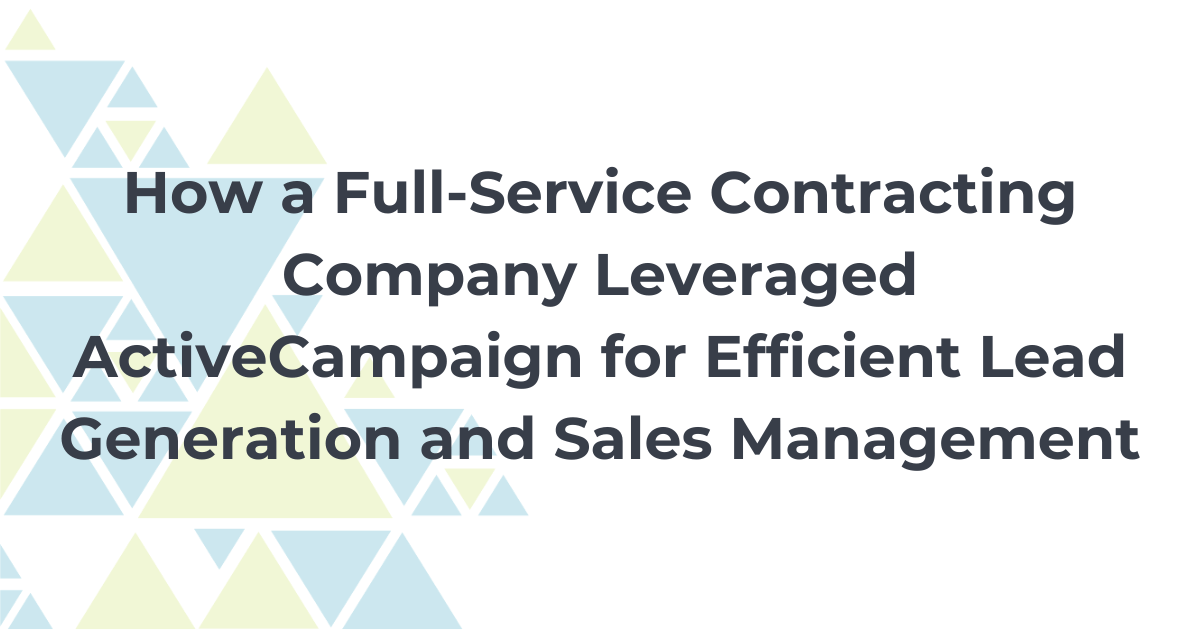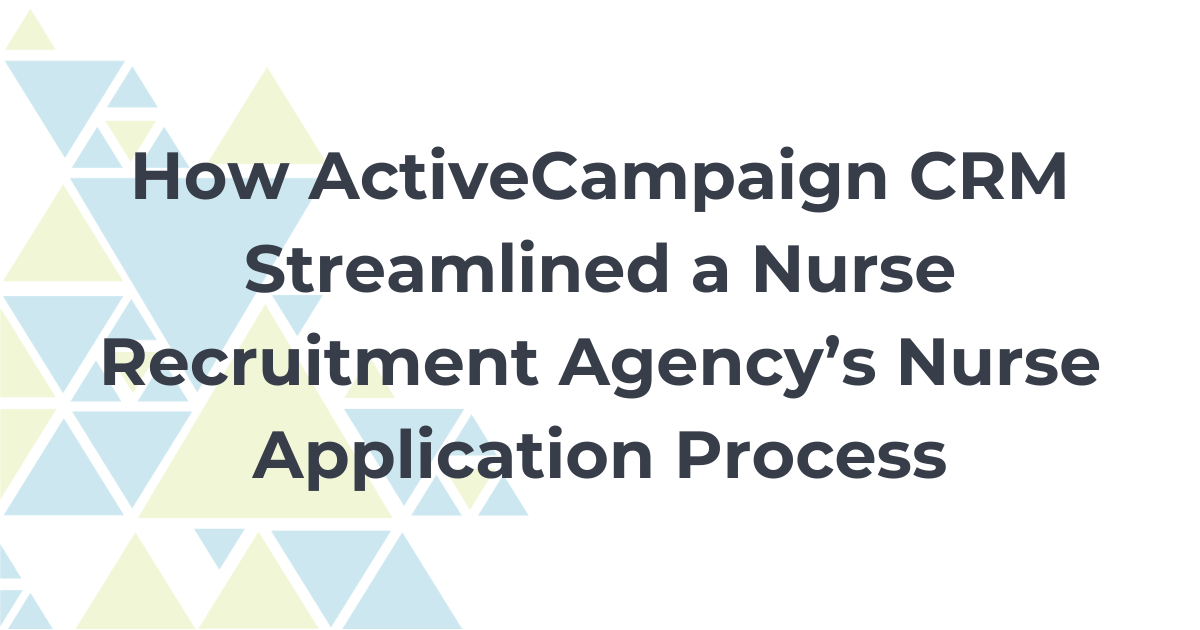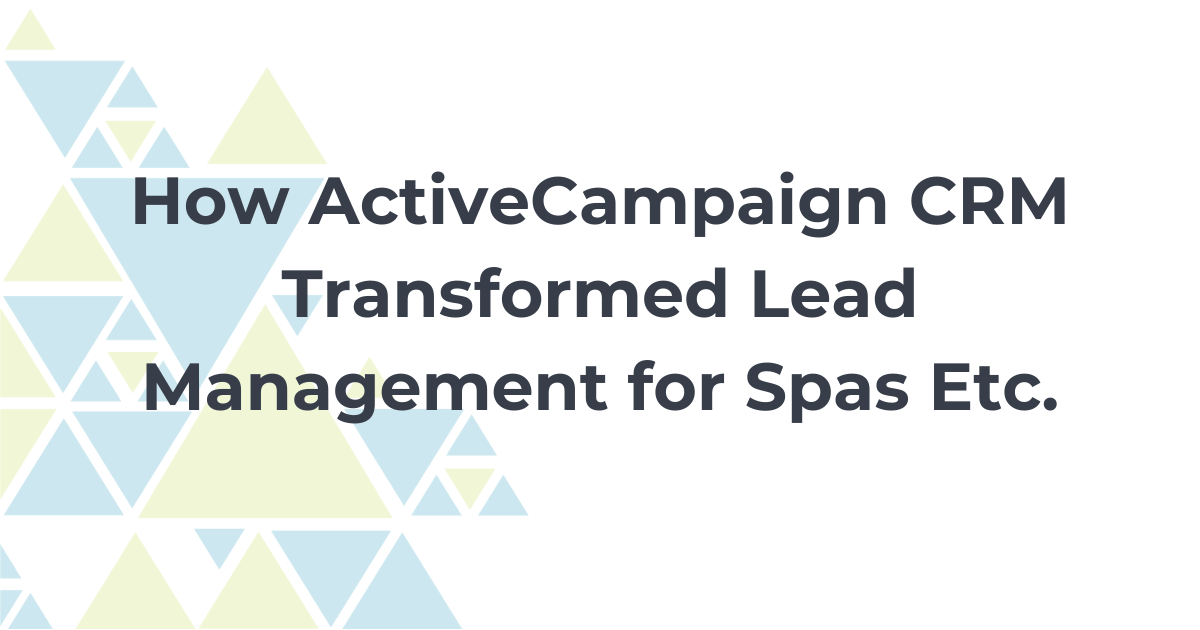Have you ever been in a class with a teacher or taken a course and thought, “Wow, she’s just born to teach?”
Everything just seems to come effortlessly from the instructor. She knows how to convey the information in a way that you understand and feel excited to act upon after the course has completed.
Well, you should be encouraged that most of us are not natural teachers or instructors. Even that rockstar teacher or instructor you had, she probably had put in a lot of practice and training to be that good.
When it comes to creating an info product, we’re usually inspired by experiences stemming from our careers or businesses–skills and knowledge that we’ve honed over the years.
But think about introducing this information as an info product to a customer or client. Because we’ve been immersed in our niche of expertise for so long, it could be like starting at step 5 of mastery when your customer just started the journey at step 1.
Imagine walking into a rocket-engineering lab. You’re greeted by the head engineer as if you’re his peer, not as a visitor. He starts with a very technical conversation about the current goings-on in the lab as if you’re a physicist with a Ph.D. and years of experience.
You’re hearing all these words and have no idea what he’s talking about. He may as well be speaking French or Greek! You’re trying to keep up with the conversation as he points things out to you, but you don’t understand what you’re looking at and how all this can make a rocket be launched into space.
So imagine now a similar scenario for you and your customers. The challenge is that when info-product buyers make that purchase, the initial excitement of learning something new and useful quickly can turn into overwhelm when they look at your content in all of its entirety–all the videos, the course modules, the worksheets, and other materials.
They know that they want to be just like–know this information inside and out. But they look at the mountain of information they need to absorb and are intimidated.
How can you help your audience to become a master like you?
In this vlog, you’ll learn strategies of how to take all that amazing knowledge and experience from out of your head and into your info-product–all without overwhelming your learners.
Knowing It Vs. Teaching It
When I first decided that I was going to create a digital product, I was SO EXCITED! I felt so ready to share all that I had learned, both in the classroom and on the job. I knew that this info-product could positively impact the lives of others.
I knew that I was an expert on this topic, so it’d be such a no-brainer to write. It’d be amazing!
So, I finally sat down to start planning what this info product would be about.
My brain went blank.
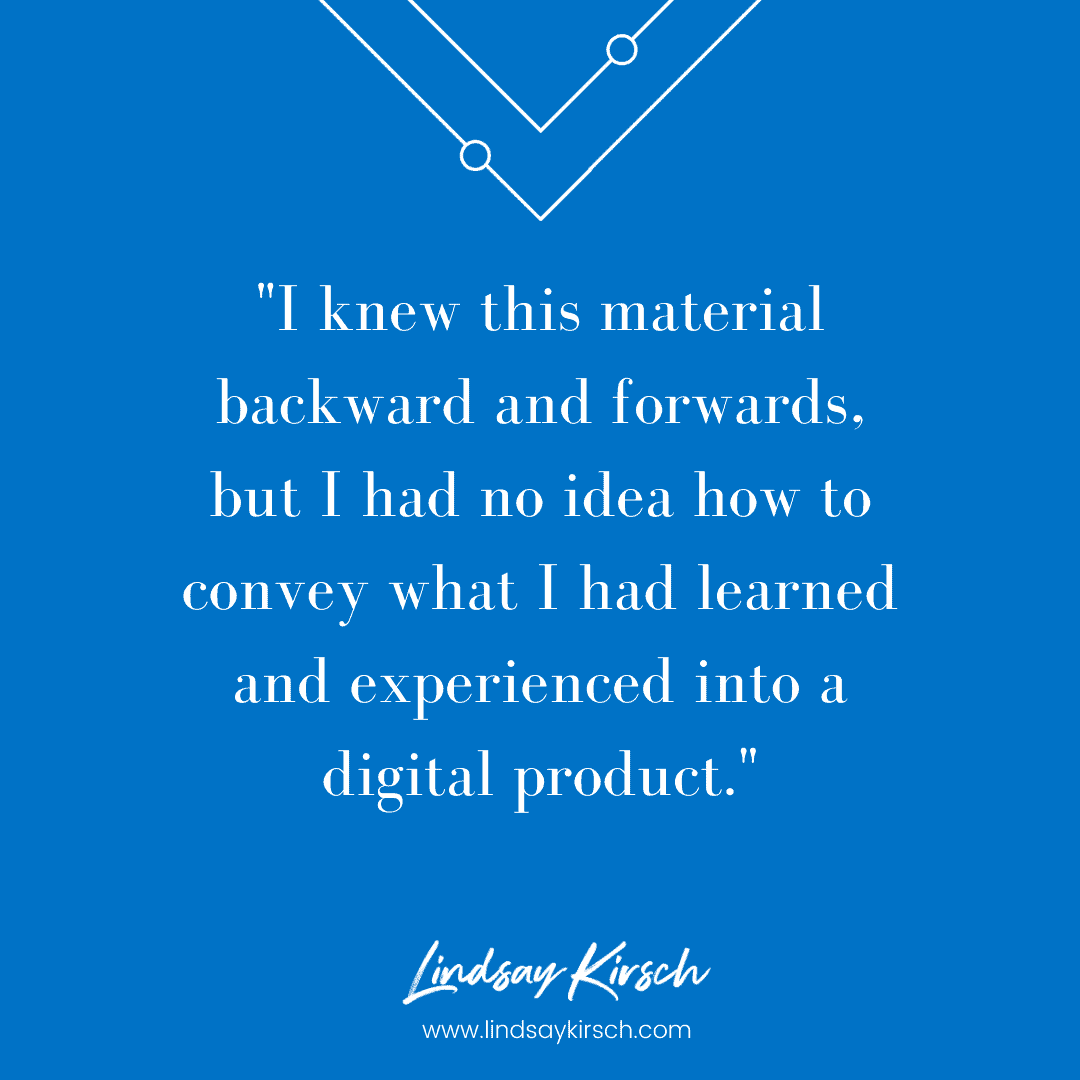
I didn’t even know where to begin. It was so strange.
I knew this material backward and forwards, but I had no idea how to convey what I had learned and experienced into a digital product.
So even though I was really great at doing this type of work–teaching other people how to create products–I didn’t know how to teach it.
It turned out that just because I knew how to do this naturally did not mean I could just start teaching it effortlessly to other people.
The Paradox of Mastery: Unconscious Competence
So with mastery, there’s a bit of a paradox. You’re able to get to a place of expertise, where you’re just in flow with your work. But then how can you really show what you know?
Say, for example, you get me talking about gymnastics–a topic I know so well because I was a competitive gymnast growing up.
It all just streams out of my brain. I don’t have to think about anything I’m saying. It’s like walking. I just know it. It just flows, easily–and I rarely have any sort of hiccups in discussing methods and techniques.
Here’s a bit from Forbes about this phenomenon:
“[Masters] had a way of thinking that was exceptionally fluid; they could adapt to almost any circumstance; when confronted with problems, they could look at them from novel perspectives and solve them. They could do all of this with surprising rapidity as if they had developed an intuitive feel for their work.”
What this state is called is unconscious competence – when you know something so well that you don’t even have to think about it. It’s almost automated.
There are four stages of competence, as outline by TrainingIndustry.com:
1. Unconscious incompetence–where a learner doesn’t know what she doesn’t know (e.g., an individual comes to your website and discover your new info product that helps her do her job better)
2. Conscious incompetence–where a learner does know what she doesn’t know (e.g., she knows she doesn’t know how to drive a car)
3. Conscious competence–where a learner knows a certain skill, but it still takes some time, practice, and effort to do it (e.g., she knows how to play the piano after taking lessons for a few years)
4. Unconscious competence–where a learner knows a skill so well, she can perform it without thinking (e.g., after five years of experience, she can drive a car without needing an instructor by her side)
Many times, the goal of your info product is to take your audience from stage 1 to stage 4, but you can’t just do it in one fell swoop. You may know your subject inside and out, frontwards, and backward, but it doesn’t mean that you’ll translate that knowledge into something your audience will understand.
You’ll need to rewind and go backward, from step 4 back to step 1 and that’s easier said than done.
From Out of Your Head and in Front of Your Audience
So you know all this great stuff, and you can communicate it so easily.
But it doesn’t mean you can just spew information out to your audience and then suddenly, they become masters, too. We, unfortunately, do not learn by osmosis.
And, if you’ve been reading this blog regularly, you know that the ability to effectively teach is the highest level of knowledge mastery.
So how do you take all this great information and bring it to your learners in a way they’ll understand?
You have to start from the ground up. Your info product is trying to solve a problem. You, being a master, have already learned how to overcome this problem. But it doesn’t ensure that your audience will be able to do the same.
1. Analyze. So first, you have to understand where your audience is through gap analysis. You must figure out how much your audience knows already and how close your info product is to your audience’s knowledge.
2. Design. This is where you create the foundation or the blueprint of your course. You determine what the specific lessons, topics, activities, and feedback methods are (all of the things we learned in the 9 events of instruction!)
This framework will ensure that your learners are active in the learning process, and you’re getting feedback from them along the way, where you can tweak your info product or course.
3. Develop & Create. You build when you have a solid content map and game plan in place. During the development phase, you select your tools and technology to create your actually learning event assets. This can include videos, worksheets, diagrams, processes.
4. Implement. This is the phase when you take your completed learning assets and put them in the place where your users will access them. This could be a learning management system, website, or even tools like Udemy.
5. Evaluate. This is where you determine and quantify the success of your product. In school, this would be like taking a final exam. However, it can also be subjective in the case of a course survey or having learners complete self-evaluations.
Creating New Masters Through Our Info Products
When we are creating high-quality content, one of our goals is that our audience can also feel that sense of mastery, that unconscious competence! We want them to feel a sense of flow with the information we’ve given them.
We want them to really get it, to learn!
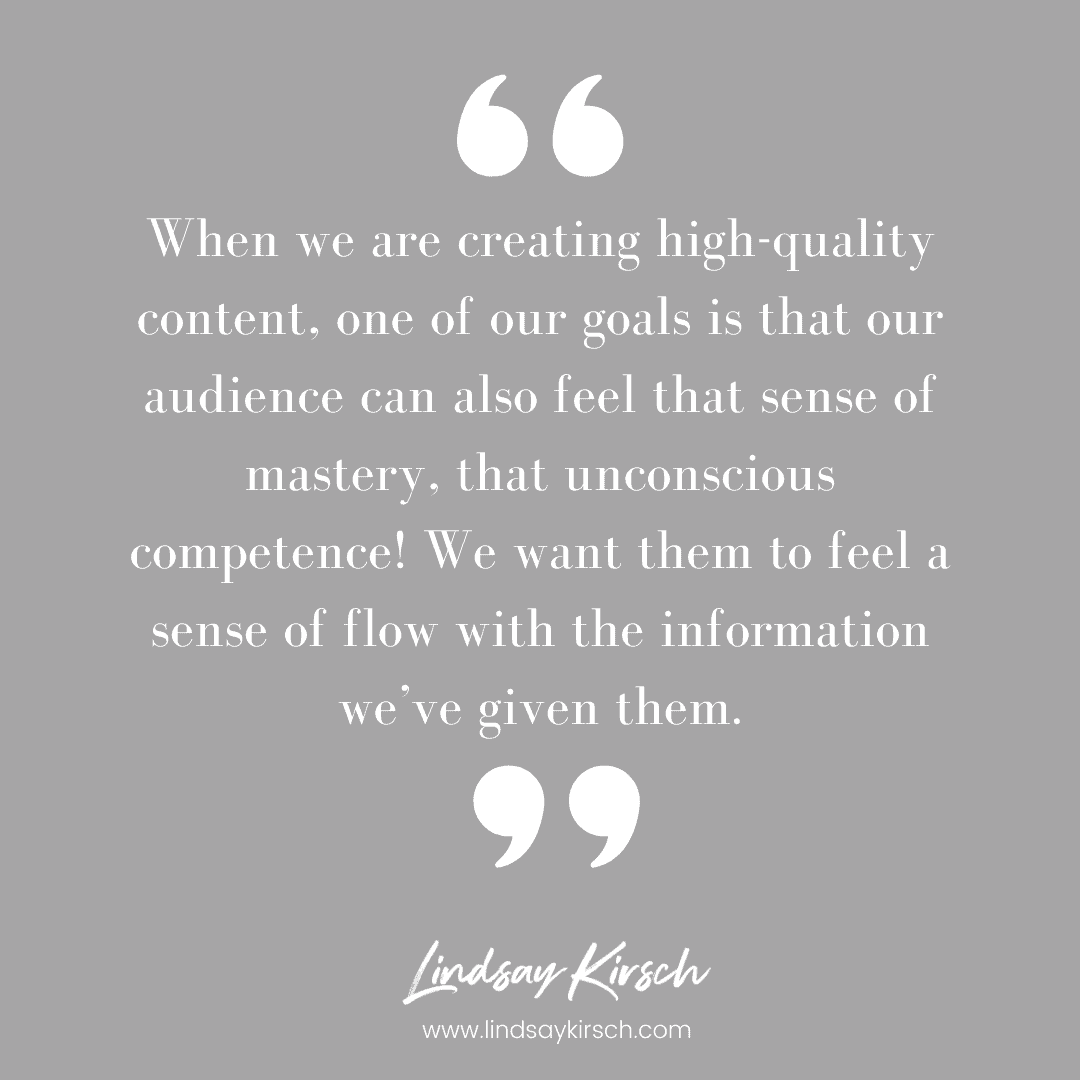
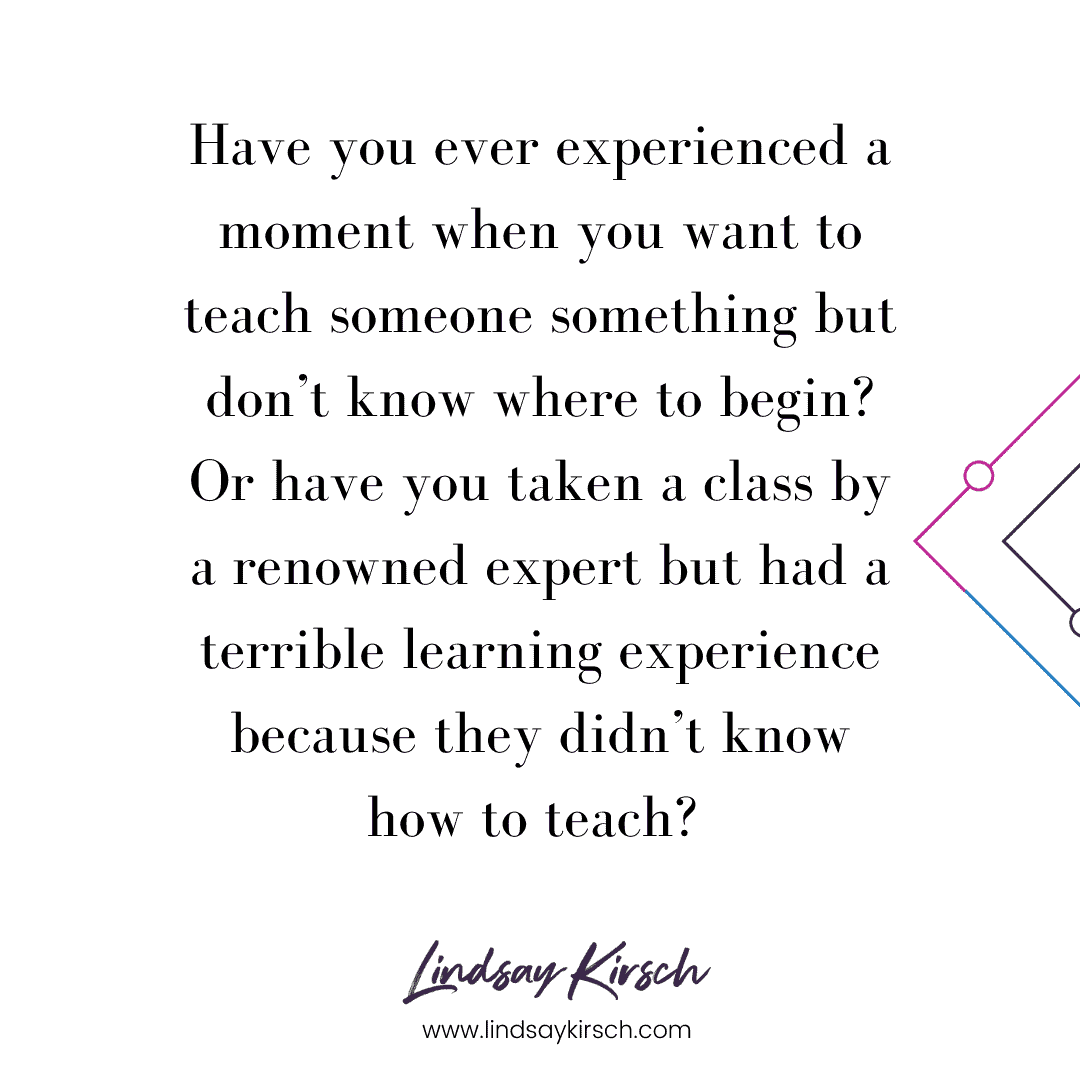
Otherwise, what’s the point of even offering this information? To have it go in one ear and out the other? To just hear ourselves talk?
There are PLENTY of other talking head videos out there that drone on and on like Charlie Brown’s teachers and parents. We don’t need to add to that.
What we really want to do is to give our audience the tool they need to apply and execute the learning they’ve received from us in their everyday lives.
I’d love to hear your experiences and questions in the comments below.

